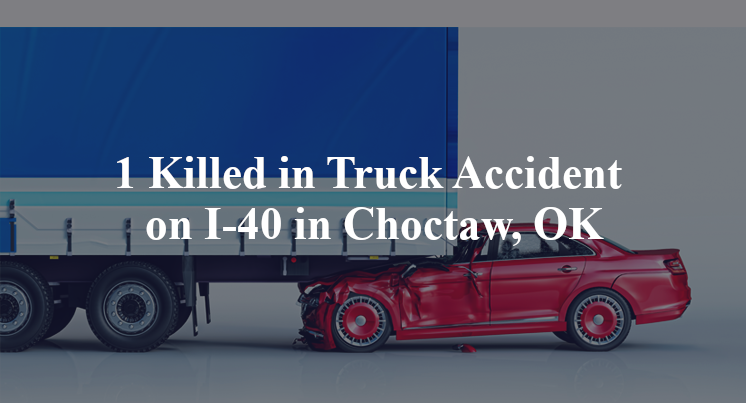1 Killed in Truck Accident on I-40 in Choctaw, OK
Choctaw, OK — April 8, 2025, one person was killed in a truck accident at about 5:25 a.m. on eastbound Interstate 40 near Triple X Road.
Authorities said a fuel truck stopped when a vehicle in front of it became disabled on the highway, but the vehicle behind it crashed into the truck.

The driver of the third vehicle, whose name has not been made public yet, died in the crash, according to authorities.
The driver of the first vehicle was arrested on suspicion of driving under the influence of alcohol, authorities said.
Authorities have not released any additional information about the Oklahoma County crash. The accident is still under investigation.
Commentary
When a fatal crash involves a disabled vehicle, a stopped fuel truck and a third vehicle unable to stop in time, it’s a clear sign that multiple decisions, or failures, converged in a way that left one person with no way out. According to reports, the chain reaction began when a vehicle became disabled in the roadway, allegedly due to impaired driving. A fuel truck stopped behind it, and then a third vehicle collided with the back of the truck, killing its driver.
From a legal standpoint, the person who allegedly drove under the influence and disabled their vehicle in the travel lanes bears significant responsibility. Impairment doesn’t just create a hazard: it introduces unpredictability to an environment where every driver relies on the assumption that others are behaving responsibly. When that assumption breaks down on a high-speed highway like I-40, the results are often deadly.
That said, the focus can’t stop there. Investigators also need to determine whether the fuel truck was operating safely at the time. Was the driver following at a safe distance from the disabled vehicle? Did they use hazard lights or place warning devices after coming to a stop? A fuel truck is a high-risk vehicle to collide with — especially in the dark, early morning hours — and that makes the visibility and positioning of the truck a critical issue.
As for the third vehicle, the question becomes: Did the driver have any chance to see the hazard and avoid it? At 5:25 a.m., visibility can be limited. If the roadway was unlit and the fuel truck had only recently stopped, it may have been impossible for the driver of the third vehicle to avoid the collision. But if there was ample time and distance to respond and they failed to do so, that may indicate distraction or unsafe speed.
This crash is a clear example of how one reckless act, driving under the influence, can set off a chain reaction that endangers everyone on the road. But the final outcome also depends on how others respond. That’s why a full investigation needs to look at all three vehicles, all three drivers and whether each did everything they could to prevent a bad situation from turning fatal.
In the end, this wasn’t just one bad decision: It was a failure across several points in the chain of events. And the only way to prevent a similar crash in the future is to examine each of those failures closely, honestly and without assumption.

“These are essential reads for anyone dealing with the aftermath of a truck wreck”– Attorney Cory Carlson